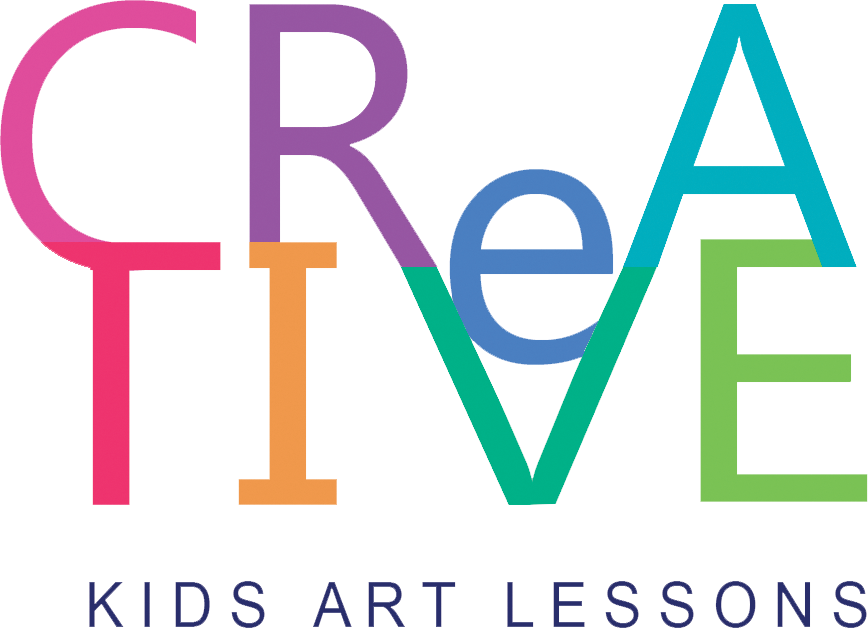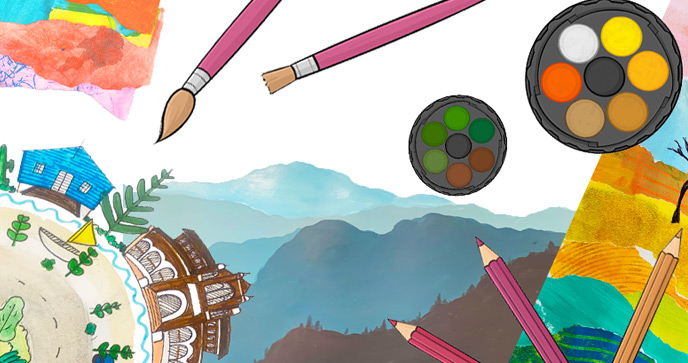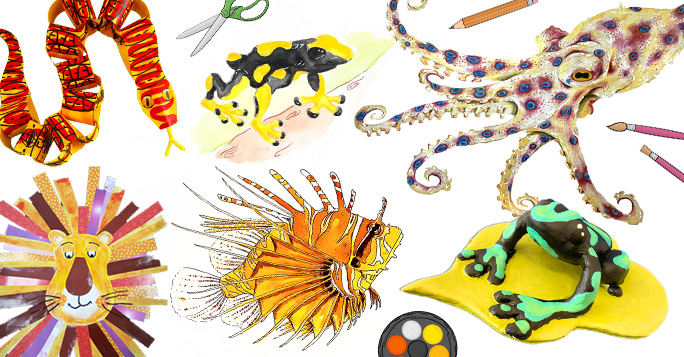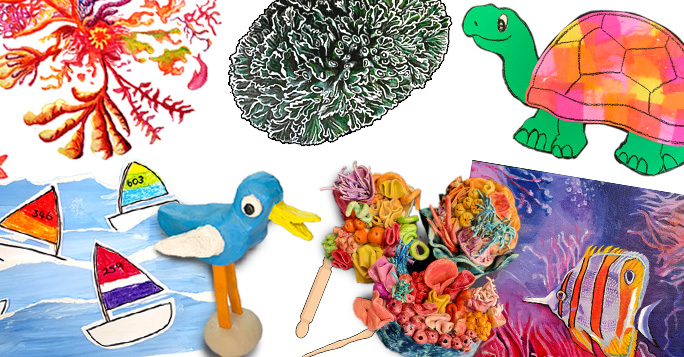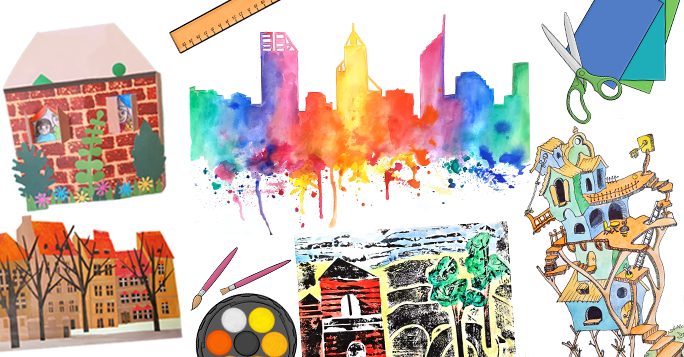Landscapes
Our Landscape lesson plans are designed to expand your students’ knowledge of perspective, atmosphere, style, and design.
Expose your students to the styles of famous landscape artists like Mia Charro, Ton Schulten, and Friedensreich Hundertwasser, and give them the tools to create their own artworks emulating the style of the reference artist. Students will learn how to paint landscapes both representationally and stylistically, and will have the opportunity to expand their knowledge of different materials and techniques such as acrylic painting, drawing, collage, oil pastel, and watercolour.
 In the year K-2 category, students have the opportunity to learn about famous Austrian landscape artist Friedensreich Hundertwasser. Students will study Hundertwasser’s highly stylised landscapes, and create their own artworks that emulate his style using drawing techniques and oil pastels. Next, students will study the brightly coloured artworks of Spanish artist Mia Charro and then create their own layered landscape artworks using painted papers and collage techniques. In the Hundertwasser project, students will have to consider colour, shape, line, repetition and space in creating artworks that are highly linear, brightly coloured, and considerably patterned. Students will learn how to create a stylised artwork from a representational source, and then how to add details to their artworks, incorporating line, repetition, colour and pattern to emulate the style of Hundertwasser. In the Mia Charro project, students can experiment with implied texture and colour in creating their painted papers, and then will learn about atmospheric perspective and contrast in selecting the placement of their painted papers. Students will also have the opportunity to learn about perspective in landscapes, by placing smaller trees in the background of their artworks, and larger trees in the foreground, to imply distance. Students will experiment with pencil, marker, oil pastel, acrylic paint (and paint techniques such as sponging, dry-brushing, and scraping), and collage techniques to create visually stunning artworks that are sure to brighten up any classroom.
In the year K-2 category, students have the opportunity to learn about famous Austrian landscape artist Friedensreich Hundertwasser. Students will study Hundertwasser’s highly stylised landscapes, and create their own artworks that emulate his style using drawing techniques and oil pastels. Next, students will study the brightly coloured artworks of Spanish artist Mia Charro and then create their own layered landscape artworks using painted papers and collage techniques. In the Hundertwasser project, students will have to consider colour, shape, line, repetition and space in creating artworks that are highly linear, brightly coloured, and considerably patterned. Students will learn how to create a stylised artwork from a representational source, and then how to add details to their artworks, incorporating line, repetition, colour and pattern to emulate the style of Hundertwasser. In the Mia Charro project, students can experiment with implied texture and colour in creating their painted papers, and then will learn about atmospheric perspective and contrast in selecting the placement of their painted papers. Students will also have the opportunity to learn about perspective in landscapes, by placing smaller trees in the background of their artworks, and larger trees in the foreground, to imply distance. Students will experiment with pencil, marker, oil pastel, acrylic paint (and paint techniques such as sponging, dry-brushing, and scraping), and collage techniques to create visually stunning artworks that are sure to brighten up any classroom.
 In the year 3-4 category, students will study the work of famous landscape artist Ton Schulten, known for his brightly coloured geometric landscapes that incorporate colour blocking and contrast. Students will then create a Mandala artwork, incorporating landmarks, buildings, and plants from their hometown to create a personalised radial artwork that represents where they come from. In the Ton Schulten inspired landscape artwork, students will focus on the elements of colour, shape, value, contrast and space in creating their compositions, in order to create a stylised landscape. Students will learn how to create the illusion of depth through the use of linear perspective and colour contrast, to suggest space and shape in their artworks. In the My City Mandala project, students will learn about radial symmetry, and how to create an artwork based on a circular composition that is balanced and harmonious through pattern and colour. Students will further their understanding of linear perspective in the suggestion of space, by creating stylised buildings that are altered to fit the radial symmetry of the artwork. Students will focus on the elements of colour, shape, value, contrast and space in this stylised landscape artwork to create an effective work that accurately portrays their hometown. Students will have the opportunity to use a range of materials, including pencil, marker, oil pastel and watercolour.
In the year 3-4 category, students will study the work of famous landscape artist Ton Schulten, known for his brightly coloured geometric landscapes that incorporate colour blocking and contrast. Students will then create a Mandala artwork, incorporating landmarks, buildings, and plants from their hometown to create a personalised radial artwork that represents where they come from. In the Ton Schulten inspired landscape artwork, students will focus on the elements of colour, shape, value, contrast and space in creating their compositions, in order to create a stylised landscape. Students will learn how to create the illusion of depth through the use of linear perspective and colour contrast, to suggest space and shape in their artworks. In the My City Mandala project, students will learn about radial symmetry, and how to create an artwork based on a circular composition that is balanced and harmonious through pattern and colour. Students will further their understanding of linear perspective in the suggestion of space, by creating stylised buildings that are altered to fit the radial symmetry of the artwork. Students will focus on the elements of colour, shape, value, contrast and space in this stylised landscape artwork to create an effective work that accurately portrays their hometown. Students will have the opportunity to use a range of materials, including pencil, marker, oil pastel and watercolour.
 Within the year 5-6 category, students will expand on their understanding of perspective in artwork through the creation of a serene atmospheric landscape artwork. They will then further build their perspective skills with a magnificent tonal landscape artwork. In the atmospheric landscape artwork, students will create a sketch from an image, producing an accurate representation of their reference image by keeping in mind the elements of space, scale, shape, and line. They will draw on these elements in arranging their landscape into distinct sections to enhance the representation of depth in the artwork. Students will then learn how to incorporate various tones and levels of detail in different sections of their artwork to appropriately represent a sense of depth, and to emulate the natural appearance of their reference images. In the tonal landscape artwork, students will focus on colour choices and tone in the creation of a monotone artwork that represents distance and depth accurately to their reference images. Students will have to consider contrast in their colour choices, placing lighter colours in the background and darker colours in the foreground to create a sense of perspective, distance, and depth in their artworks. Students will learn to mix a range of tones using a restricted colour palette to create a representational image of a layered mountain scene.
Within the year 5-6 category, students will expand on their understanding of perspective in artwork through the creation of a serene atmospheric landscape artwork. They will then further build their perspective skills with a magnificent tonal landscape artwork. In the atmospheric landscape artwork, students will create a sketch from an image, producing an accurate representation of their reference image by keeping in mind the elements of space, scale, shape, and line. They will draw on these elements in arranging their landscape into distinct sections to enhance the representation of depth in the artwork. Students will then learn how to incorporate various tones and levels of detail in different sections of their artwork to appropriately represent a sense of depth, and to emulate the natural appearance of their reference images. In the tonal landscape artwork, students will focus on colour choices and tone in the creation of a monotone artwork that represents distance and depth accurately to their reference images. Students will have to consider contrast in their colour choices, placing lighter colours in the background and darker colours in the foreground to create a sense of perspective, distance, and depth in their artworks. Students will learn to mix a range of tones using a restricted colour palette to create a representational image of a layered mountain scene.
Related Art Lessons
Students will have fun creating a range of artworks based on deadly and dangerous animals and sea creatures. Find out fun facts and create artworks of lions, snakes, poison dart frogs, blue-ringed octopus and lionfish. We'll use stylised and realistic techniques to bring a variety of different projects to life, based on some of the deadliest and dangerous creatures on earth. In this unit, we'll use collage, painting, drawing, mixed media and craft, whilst having fun.
Dive in deep to the vibrant and diverse world beneath the waves! In this series of lessons, we will explore the beauty and mystery of aquatic life experiment with painting, drawing, collage, and sculpture, to capture the movement, colours, and textures of the aquatic world.
Create amazing buildings in this fun unit with art lesson plans inspired by architecture. There are exciting drawing, painting, collage and printmaking projects to create, inspired by Paul Klee and Dr Seuss. There's a city skyline to draw and paint and a collagraph house printmaking project to try.
